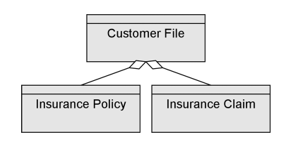An application service represents an explicitly defined exposed application behavior.
An application service exposes the functionality of components to their environment. This functionality is accessed through one or more application interfaces. An application service is realized by one or more application functions that are performed by the component. It may require, use, and produce data objects.
An application service should be meaningful from the point of view of the environment; it should provide a unit of behavior that is, in itself, useful to its users. It has a purpose, which states this utility to the environment. This means, for example, that if this environment includes business processes, application services should have business relevance.
A purpose may be associated with an application service. An application service may serve business processes, business functions, business interactions, or application functions. An application function may realize an application service. An application interface may be assigned to an application service. An application service may access data objects. The name of an application service should preferably be a verb ending with “ing”; e.g., “transaction processing”. Also, a name explicitly containing the word “service” may be used.

Properties:
| Property | Metamodel name | Description |
| Short description | ShortDescription | |
| Implements | Implements | Links to: All templates. |
| BreaksDownTo | BreaksDownTo | Links to: All templates. |












